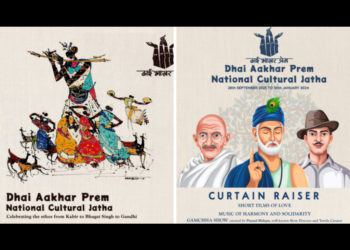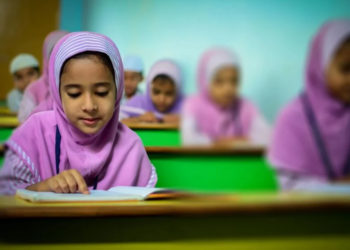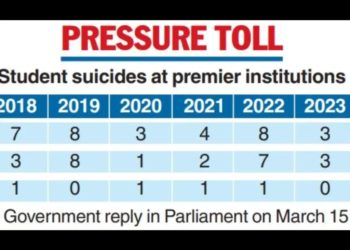For a long time, graphic novels, comic books, and cartoons have efficiently popularised unconventional views and narratives, Orijit Sen and Samarth have used this attractive canvas to break their silence, especially about the impending maladies that the country is suffering from, but is made to live in denial. ‘Gang of 20’ contributes to the formation of popular counter-publics that both, consciously or unconsciously, resist and challenge the anti-democratic encroachments of the authoritarian state.
‘Gang of 20’ is a satirical comic book on the G20 Summit that is going to take place in India, in 2023. Ahead of time, Orijit and Samarth decide to break open the alternative viewpoint in comparison to the mainstream media which is going to push a dazzling story.
Comic books can show things that cannot be said and narrate the magnitude of an individual’s experiences by juxtaposing words and pictures. The authors, therefore, decided to work with intricate anthropomorphic characters converting a complex subject like finance, the G20 Summit, Global leaders and their discussions which almost sound as if they are on an extravagant vacation, and the concerns of the protestors, into satire to get it across audiences, young and old.
Beginning with the naming of the comic book, the authors decide to change the forum name of the international economic cooperation from ‘Group of Twenty (G20)’ to ‘Gang of 20’. The word ‘Gang’ refers to a systematically structured group of criminals. The G20 contains 19 countries and the European Union (EU), and so these are presented to us as criminals as they hide the reality and portray the surreal.
The cover page brings to us a clear picture of what exactly is happening inside the comic book. There are protestors who have real concerns and there is a ‘Gang of 20’ seated at a round table for fanciful discussion.
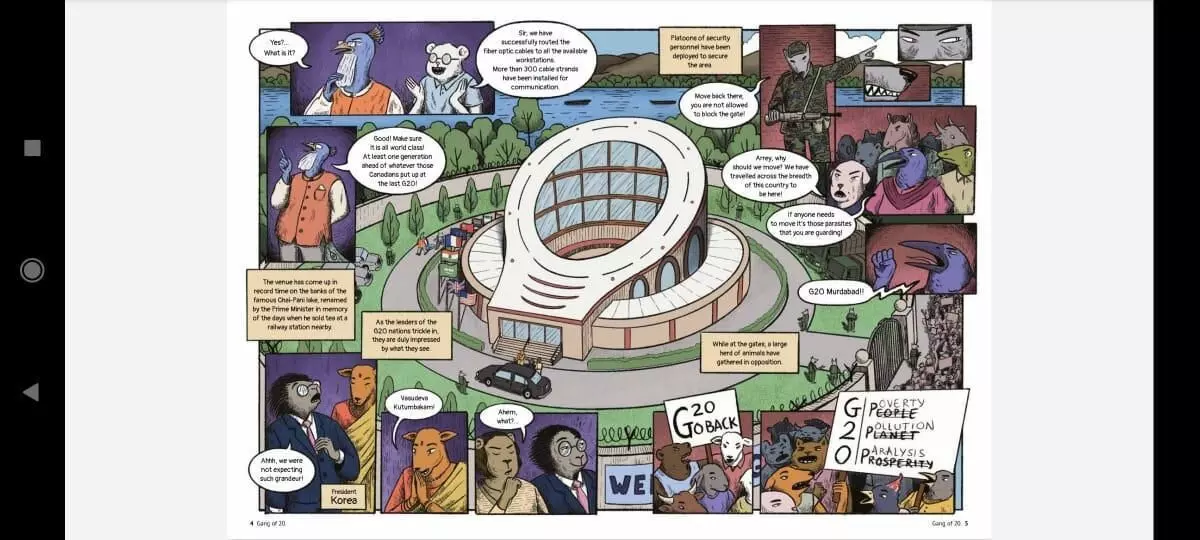
Orijit Sen and Samarth assist our imagination with their rendering of an august venue that will be put up for the G20 summit. It presents a rigid dichotomy between the global leaders inside the venue and the protestors outside of the venue wanting the leaders of the nations to retreat as they aren’t discussing actual issues of poverty, pollution, and paralysis.
The leaders present at the venue are the Prime Minister of France and the Prime Minister of China discussing their upcoming nuclear plants. Prime Minister of Russia and Brazil preparing to fake a smile for a photograph with the host, the Prime Minister of India.
Then the authors share with us the plight of land-owning cotton farmers of Maharashtra as well as the landless peasants and sharecroppers. Soon after this, the US President dismisses the Agricultural Secretary of Kenya’s remarks deliberating on food security and confident economies whilst sitting on an inflated swim ring and the Prime Minister of the UK affirms that what is spoken at the forum is not against the International treaty on Farmers Rights because those present at the summit are themselves the United Nations.
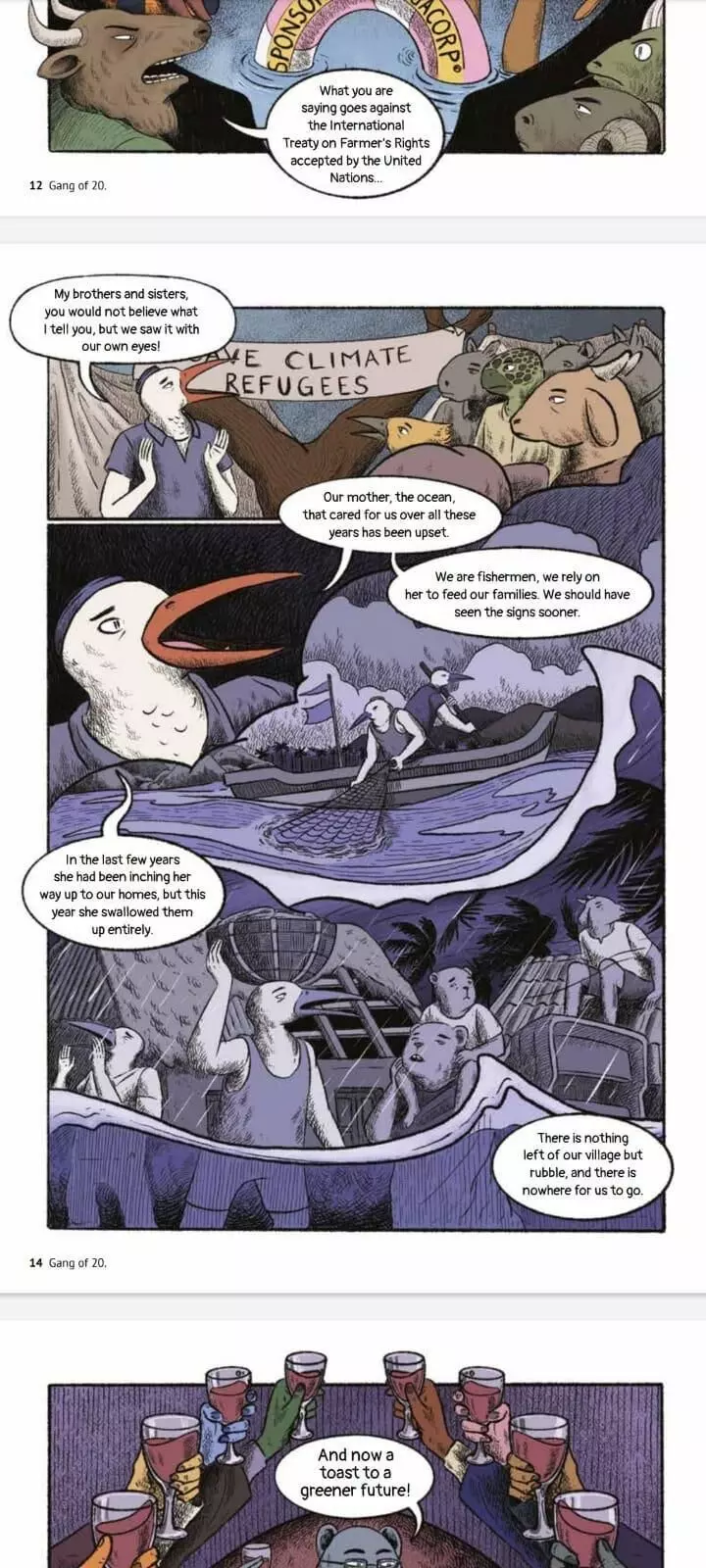
The looming issue of ‘climate change’ and ‘refugees’ is also brought to the reader, alongside the bogus ‘greener future promise’ by the Prime Minister of Australia and unrealistic goals of saving oil, coal, and gas. The Prime Minister of Israel is also shown silently discussing arms and ammunition with the host.
Throughout the comic book, you will notice the deliberate use of colours. The colour purple in the background of the global leaders suggests their royalty, and again it is used as representative of climate change.
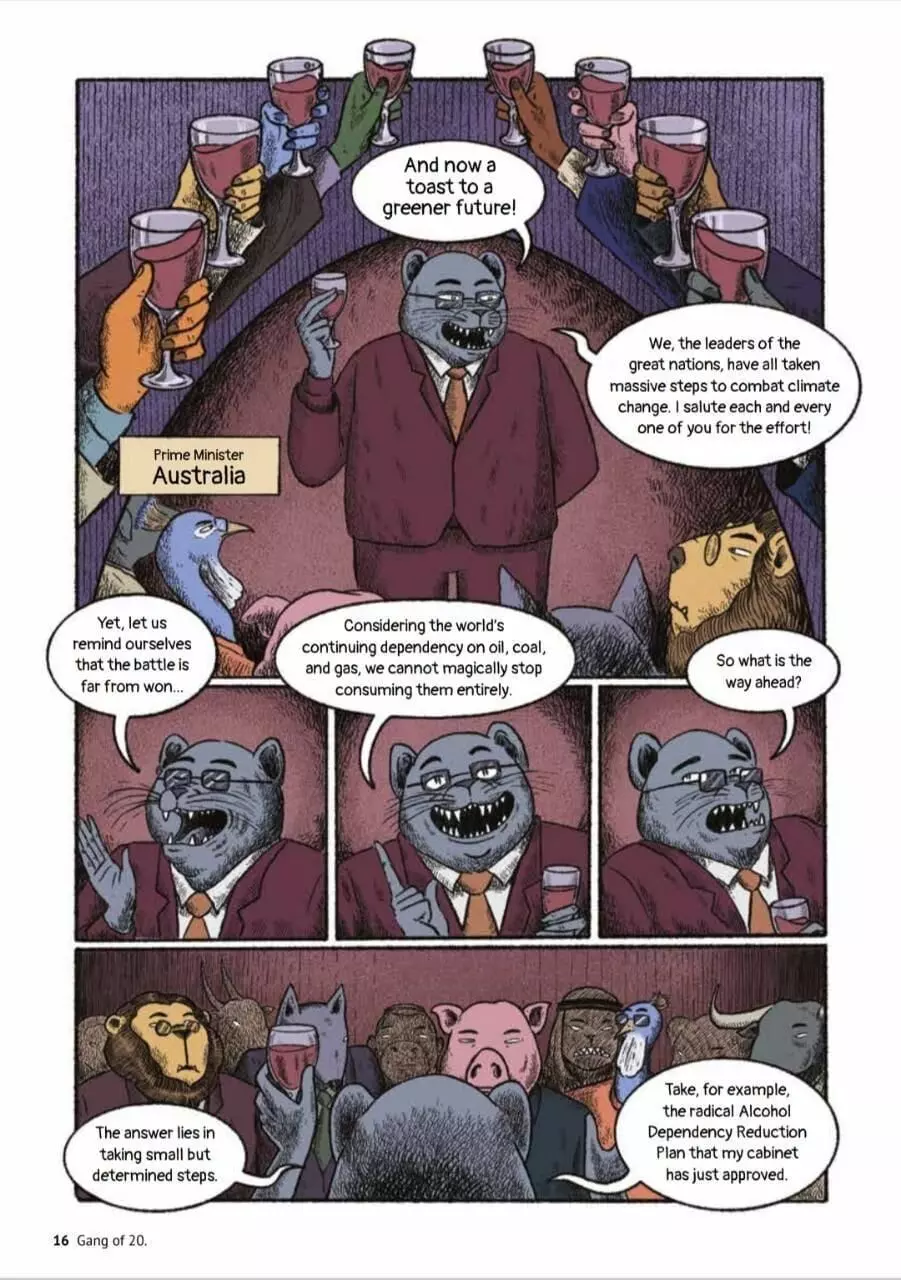
In the later panels, a global leader wears burgundy coloured attire suggesting ambition, individuality, power, and pride. The colour yellow symbolises the protestors, and the other colour used hand in hand with it, is brown which is a voice of those close to nature.
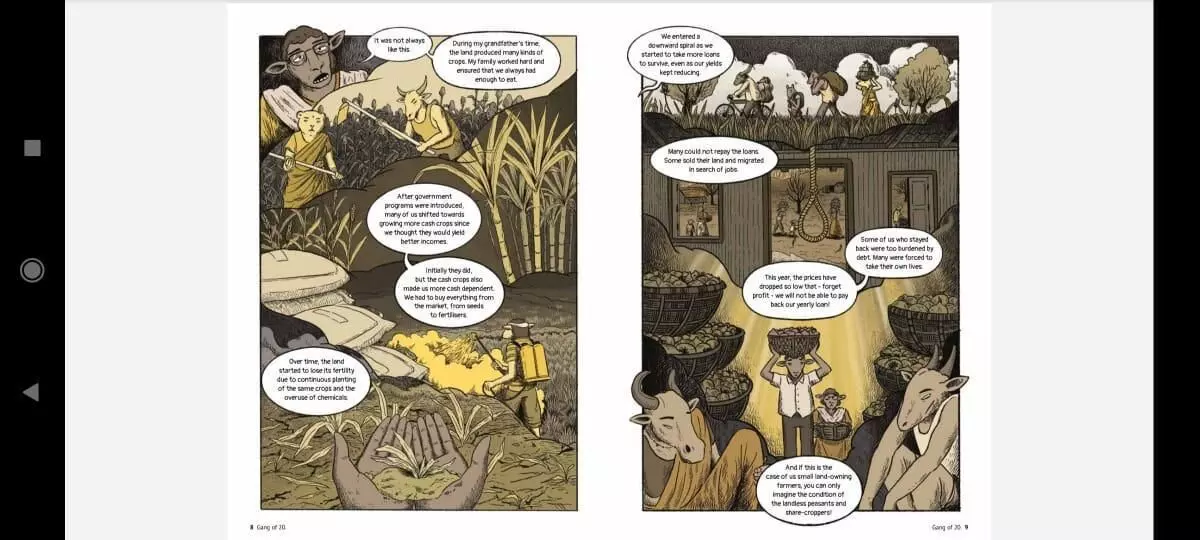
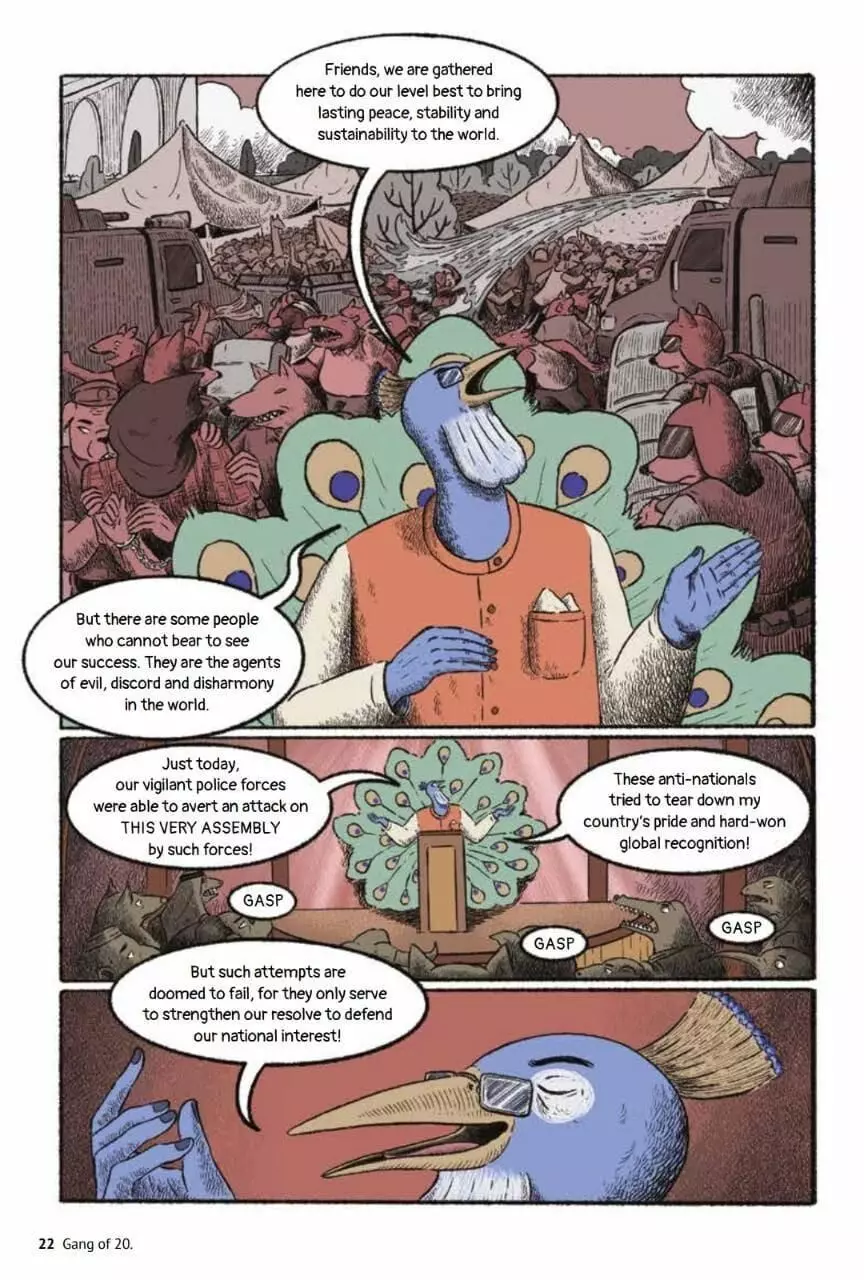
Then one can also notice the peacock i.e. the host, blue skin coloured considering him to be the ultimate hero of the occasion. The authors couldn’t but allude to certain aspects while parodying i.e. naming of the venue as Chai-Pani lake also hinting at the change of names and christening ceremony that is a common trend.
It is definitely a downward spiral for the common man who is uncertain of one’s life and therefore decides on self-immolation. The common man is also forced to be a refugee and a migrant due to displacement. ‘Gang of 20’ makes the reader think.
Title: Gang of 20 Authors: Orijit Sen and Samarth
Editor: Sonal Raghuvanshi
Publisher: Centre for Financial Accountability, New Delhi
Pages: 32

